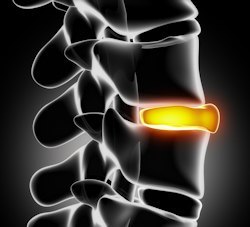
Bulging Disc Treatment
Performed by the award winning doctors in Raleigh, North Carolina
An intervertebral disc is a ring of biological matter separating one bone of the spine (i.e. a vertebra) from another. It is made up of two layers; a soft, pulpy inner layer closer to the spinal cord, surrounded by a tougher, fibrous outer ring. This layer is made of a strong, resilient material to carry out its functions. An intervertebral disc gives support to the bones above and below it, contributes to shock absorption in the spine, and helps to ensure that the proper shape and structure of the back is maintained. It is possible, however, for the outer ring of these discs to wear out or break. When this occurs, the inner, pulpy layer pushes outward and protrudes into the spaces between the normal location of the disc and the bone around it. This is known as a bulging disc.
Treatments for Bulging Discs are generally non-to minimally invasive and are conservative in nature.
Use the form on the right to request a call from our Patient Concierge Group.
Causes of Bulging Disc
Treatment for Bulging Disc

If epidural injections do not effectively treat the pain, more direct measures may be advised. These include disc denervation, a technique in which pain signals are reduced by selectively disrupting the affected nerve. This is done by numbing the area around the disc, and then inserting a probe into the region of the nerve, which then delivers radio frequency waves that will reduce the signaling from the nerve.

